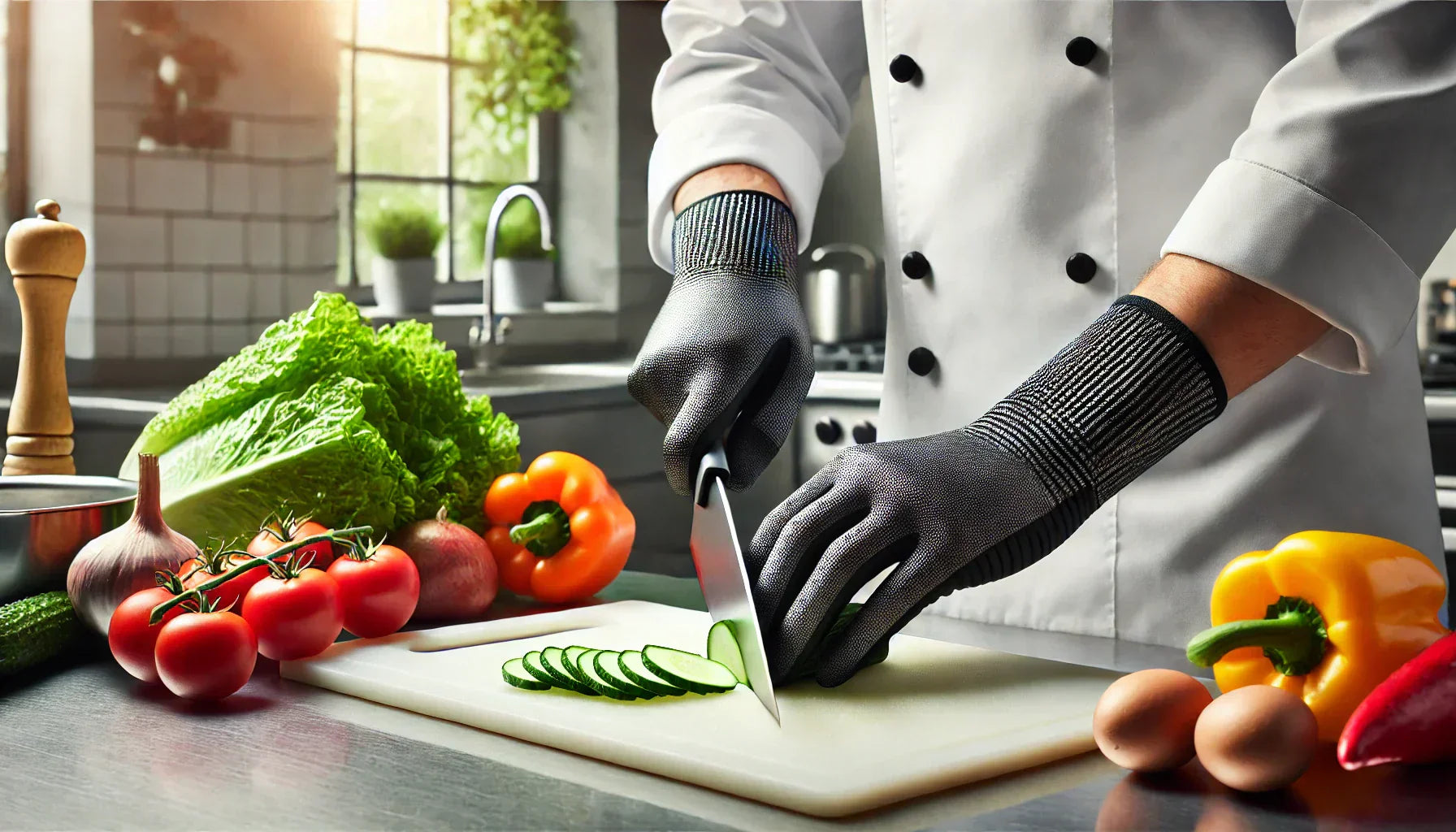Why Every Chef Needs Cut-Resistant Gloves
If you spend a lot of time slicing, dicing, and chopping in the kitchen, you know how easy it is to get a nasty cut. Whether you’re a home cook or a professional chef, cut-resistant gloves are an essential tool to keep your hands safe while handling sharp knives, mandolines, and graters.
What Are Cut-Resistant Gloves?
Cut-resistant gloves are designed using special materials like high-performance polyethylene (HPPE), Kevlar, or stainless steel fibers to protect against accidental cuts and abrasions. Unlike regular gloves, they provide enhanced durability and flexibility, allowing you to maintain precision while working.
Who Should Use Cut-Resistant Gloves?
These gloves are ideal for:
-
Professional chefs and kitchen staff
-
Home cooks who frequently handle sharp tools
-
Butchers and meat processors
-
Fishmongers and seafood handlers
-
Bakers using sharp pastry tools
-
Restaurant and food service workers
-
Vegetable and fruit processors
-
Caterers and food prep teams
The Growing Concern of Kitchen Injuries
According to the U.S. Bureau of Labor Statistics, over 350,000 hand injuries occur in workplaces each year, many of which happen in the food industry. The National Safety Council (NSC) states that knife-related injuries in commercial kitchens account for a significant percentage of these incidents. Proper protective gear, including cut-resistant gloves, can drastically reduce these risks.
Real-Life Case Studies: The Importance of Cut-Resistant Gloves
✅ Case Study 1: A Chef's Costly Mistake
John, a professional chef at a high-end restaurant, was rushing to prepare a large catering order. While dicing onions, his knife slipped, cutting deep into his index finger. He required seven stitches and was unable to work for three weeks, costing him both income and reputation. Had he been wearing cut-resistant gloves, the injury would have been minimal.
✅ Case Study 2: Safety in a Large Commercial Kitchen
A large fast-food chain mandated cut-resistant gloves for all employees handling sharp tools. Within six months, reports of hand injuries dropped by 70%. The company saved thousands in worker compensation claims and increased productivity by ensuring employees felt safer while working.
Key Features to Look for in Cut-Resistant Gloves
When selecting cut-resistant gloves, consider the following factors:
1. Cut-Resistance Level
Gloves are rated from Level 1 to Level 5 based on their protection level. For kitchen use, Level 4 or 5 is recommended to guard against sharp knives and mandolines.
2. Material Composition
-
Kevlar – Heat-resistant and durable, ideal for high-heat environments.
-
HPPE (High-Performance Polyethylene) – Lightweight and flexible, providing high cut resistance.
-
Stainless Steel Mesh – Maximum protection, often used in butcher shops.
3. Comfort & Fit
Look for breathable, snug-fitting gloves that allow dexterity. Gloves that are too bulky can hinder precision, while tight gloves can be uncomfortable.
4. Waterproof & Washable
For kitchen hygiene, opt for gloves that are water-resistant and machine washable to maintain cleanliness.
5. Grip & Non-Slip Coating
A textured grip ensures knives and tools don’t slip from your hands, reducing the risk of accidents.
Best Cut-Resistant Gloves for Kitchen Use
If you're looking for the best protection, consider these highly rated options:
✅ Cut-Resistant Kitchen Gloves - Level 5 Protection
-
Made with HPPE fibers for superior cut resistance
-
Lightweight & breathable for all-day comfort
-
Machine washable for easy maintenance
✅ Stainless Steel Mesh Gloves for Butchers & Seafood Handling
-
Maximum Level 5 protection
-
Adjustable wrist strap for a secure fit
-
Ideal for handling raw meat, fish, and heavy-duty slicing
How to Properly Use & Maintain Cut-Resistant Gloves
✔️ Wear the Right Size
Gloves that are too loose can get caught in machinery or slip off. Measure your hand and choose the appropriate size.
✔️ Clean Regularly
-
Wash with soap and warm water after each use.
-
Machine washable gloves should be dried properly to prevent bacteria buildup.
✔️ Replace When Worn Out
Even high-quality gloves wear out over time. Replace them when you notice fraying or thinning material.
Common Misconceptions About Cut-Resistant Gloves
✅ “These gloves make my hands invincible.” – They reduce cuts but won't make you immune to injuries. Always handle sharp objects carefully.
✅ “I don’t need them if I’m careful.” – Even experienced chefs make mistakes. Prevention is always better than treatment.
✅ “All cut-resistant gloves are the same.” – The material, cut-resistance level, and comfort vary greatly. Choose gloves based on your needs.
Additional Tips for Kitchen Safety
-
Always use a sharp knife instead of a dull one to reduce the risk of slipping.
-
Keep your cutting board stable by placing a damp cloth underneath it.
-
Always store knives properly in a knife block or magnetic strip to prevent accidental cuts.
-
Learn proper cutting techniques, like the claw grip to protect your fingers while chopping.
-
Use cut-resistant gloves when working with graters, mandolines, and slicers, which are responsible for a high number of kitchen injuries.
Final Thoughts: Invest in Your Safety
Cut-resistant gloves are an essential investment for anyone who spends time in the kitchen. They offer maximum protection without compromising flexibility, ensuring you work safely and efficiently.
👉 Protect your hands today with the best cut-resistant gloves. Browse our top-rated selection now: Cut-Resistant Gloves Collection

